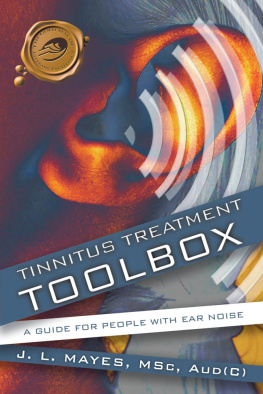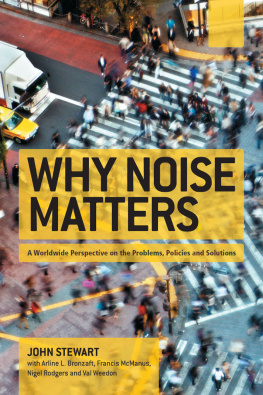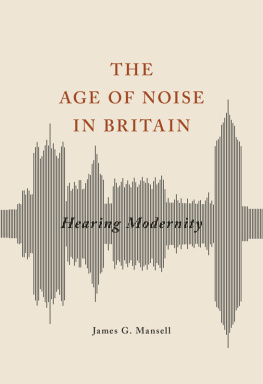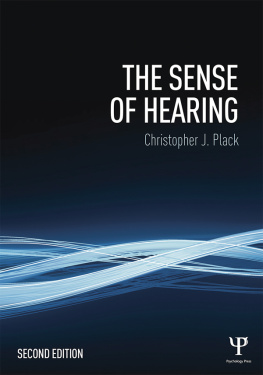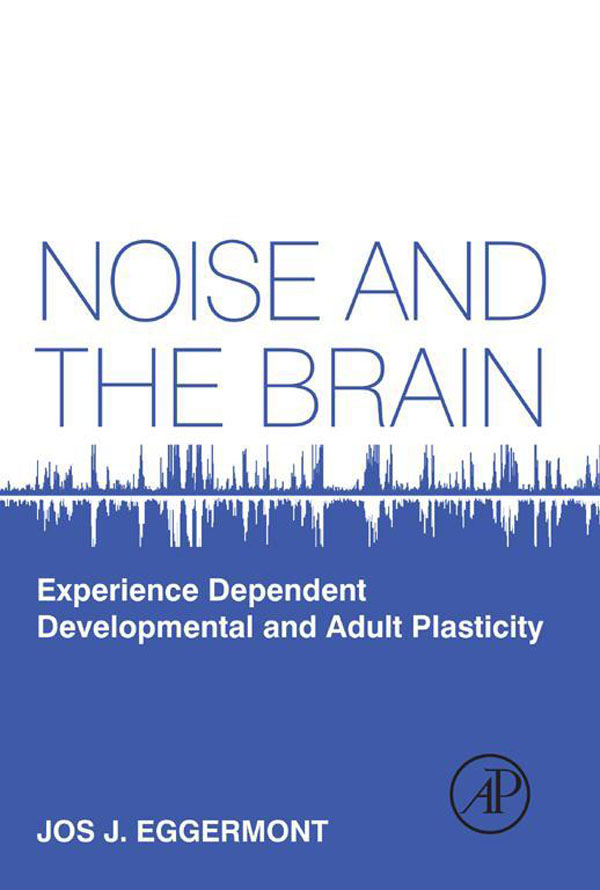Jos J. Eggermont
Emeritus Professor of Physiology & Pharmacology, and Psychology, University of Calgary, Calgary, Alberta, Canada
Copyright
Academic Press is an imprint of Elsevier
32 Jamestown Road, London NW1 7BY, UK
225 Wyman Street, Waltham, MA 02451, USA
525 B Street, Suite 1800, San Diego, CA 92101-4495, USA
Copyright 2014 Elsevier Inc. All rights reserved
No part of this publication may be reproduced, stored in a retrieval system or transmitted in any form or by any means electronic, mechanical, photocopying, recording or otherwise without the prior written permission of the publisher.
Permissions may be sought directly from Elseviers Science & Technology Rights Department in Oxford, UK: phone (+44) (0) 1865 843830; fax (+44) (0) 1865 853333; email: for further information.
Notice
No responsibility is assumed by the publisher for any injury and/or damage to persons or property as a matter of products liability, negligence or otherwise, or from any use or operation of any methods, products, instructions or ideas contained in the material herein. Because of rapid advances in the medical sciences, in particular, independent verification of diagnoses and drug dosages should be made
British Library Cataloguing-in-Publication Data
A catalogue record for this book is available from the British Library
Library of Congress Cataloging-in-Publication Data
A catalog record for this book is available from the Library of Congress
ISBN: 978-0-12-415994-5
For information on all Academic Press publications visit our website at elsevierdirect.com
Typeset by MPS Limited, Chennai, India www.adi-mps.com
Printed and bound in China
14 15 16 17 10 9 8 7 6 5 4 3 2 1

Preface
Noise is more and more pervasive in modern society. While we are slowly becoming aware of its potentially damaging consequences for hearing, we should also appreciate the necessity of sound for normal development of the auditory system and for keeping the central auditory system finely tuned. Environmental noise has long been recognized as underlying psychosomatic problems such as sleeplessness, annoyance, stress and hypertension. We are now in a position to trace the brain structures involved in this process, which may lead to better understanding of how these sounds affect us and how the effects can be ameliorated. The emotional factors that distinguish our attitudes to noise and music should also be put in perspective by elucidating the good and bad parts of making music and listening to it. In this book I bring together the varied types of sound and how they not only can affect our hearing but also how they may promote maladaptive changes in our brains, even in the absence of hearing loss.
The topics in this book reflect the effects of different types of noise (occupational, recreational, and environmental), and the noise levels, which range from those that DONT result in damage to the ear to those that result in permanent hearing loss. These sounds have in common the fact that they do affect auditory as well as nonauditory brain areas. The auditory brain changes accompany perceptual changes in humans and animals, whereas nonauditory brain areas are also involved in the psychosomatic effects of noise. Having studied the aspects of noise on hearing and deafness for more than four decades, I wanted to relate them to their often co-occurring psychosomatic aspects. This required delving into the psychological aspects of sound experiences, from pleasurable (music) to annoying (environmental noise), and into somatic reactions to sound ranging from the emotional (annoyance and stress) to the potentially bodily harmful (sleeplessness and hypertension). I learned a lot from studying this BOTH abundant and very specialized literature. In this book, I integrate the psychosomatic effects of noise with their neurophysiological and pharmacological substrates in auditory and nonauditory brain areas. These substrates reflect the mechanisms that link environmental noise to changes in emotion, stress and sleep that may even lead to cardiovascular problems.
The composition of five chapters is to a large part driven by four unexpected findings, two in animal research and two from human electrophysiology recordings. During my entire research career, I have been fortunate to be able to combine basic animal and human research, both on developmental aspects of hearing and on the consequences of hearing loss and deafness in infancy and childhood.
Lets start with the surprise findings in humans: when working on auditory evoked potentials (AEP) in cochlear implant children some unusual AEP waveform morphology was found and this prompted a detailed investigation of the age-related changes in cortical auditory evoked potentials in normal-hearing children. We (Curtis Ponton, Manny Don, and I working at the House Ear Institute in Los Angeles) found to our surprise that the morphology of the AEPs changed dramatically around 911 years of age, from a dominant positive peaked AEP to a dominant negative peaked AEP, and that the AEP properties were not mature until the very late teens. We then looked again at the results obtained in cochlear-implant patients. We found that their age-dependent AEP properties following implantation were only comparable with those of the controls when the age of the implanted child was corrected by the duration of its deafness. Thus the time-in-sound or hearing age was the determining factor for cortical maturation, illustrating that sound exposure is needed for normal development of the auditory brain. These findings take up the majority of .
In our animal experiments, we found unexpectedly that a moderate-level sound, termed enhanced acoustic environment (EAE), applied for three weeks immediately after an acoustic trauma, reduced the amount of hearing loss compared to recovery in quiet. Furthermore, we found the hypothesized abolishment of trauma-induced changes in cortical tonotopic maps, in spontaneous firing rates, and in neural synchrony found after recovery in quiet, although appreciable noise-induced hearing loss remained. When applying this moderate level EAE exposure for 5 months to normal hearing adult cats, basically a control study, we found that the neurons in auditory cortex that normally would respond to the frequency range of the EAE were now mostly unresponsive, but that they fired strongly to sounds outside that frequency range.
This finding was reminiscent of the tonotopic-map reorganization in auditory cortex that resulted from noise trauma. However, our cats exposed to the EAE showed no hearing loss as measured by auditory brainstem responses. This prompted a large parametric study on these new effects of EAEs presented at levels ~70 dB SPL on the auditory cortex. These findings feature prominently in .
These purely auditory chapters are put into broader perspective by an introductory chapter covering early animal research on hearing and hearing loss in the late 1800s and the first half of the 1900s, the discovery that occupational noise exposure can be harmful to humans, and the slow introduction of legislation to protect workers hearing from the effects of occupational noise. The second chapter covers some of the important epidemiology and etiology of noise-induced hearing loss. Here, I also introduce the reader to the fact that music making can be considered a form of occupational noise and carries some of the same harmful elements as industrial noise.


